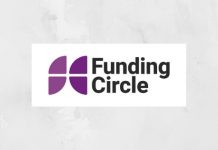A merchant cash advance (MCA) is a cash advance derived by the credit card sales accumulated in a business merchant account. A business person can apply for an MCA and can access the funds as quickly as 24 hours after approval.
MCA providers look at risk and credit criteria differently than a banker or other lenders. They look at regular credit card receipts to see if a business can repay in a timely way. So, MCA has higher rates compared to other financing options.
You must understand what you are getting into so you can make an informed decision about whether or not an MCA makes sense to you. Read on to learn more tips about merchant loan advances.

How They Differ from Actual Loans
Knowing the basic differences between MCA and business loans is the first step towards benefitting from this facility. Let us look at some of them here to avoid any confusion.
As a no-brainer, a merchant cash advance is an advance. It means that the provider is only giving you money now that they expect you will repay soon.
For example, let’s say they give you $1,000 today for a fixed future receivable, $1,200. As your business makes money, it will repay a fixed percentage of each dollar earned until the provider has been repaid the entire $1,200.
Loans have an agreed repayment schedule over a finite time, without any deviation. MCA repayment is variable as it depends on revenue generated by the business.
Holdback Vs. Interest
Banks charge interest over loans. Whereas, the holdback amount is the percentage of daily credit card sales applied to the MCA. The holdback percentage is fixed until the advance is completely repaid.
MCA providers charge a calculated risk-rate or factor rate. Always try to bargain for a lower factor rate as it allows you to take the urgency and pressure of making revenue from the business.
Recovery of MCA in Case of Bad Business Cycles
You negotiated a great deal with the MCA provider and used it for your business. Now your company has hit a rough patch and business has slowed down, what do you do?
Firstly, speak to your provider to realign your repayments according to your receivables and revenue. Communicate proactively with them about any hardships you are facing so they can be part of the solution.
Other Loan Options
There are more options available to MCA. For example, a good look at Ondeck will show you that a short-term loan can help a long way for a budding business.
For those who have a strong balance sheet and profit and loss account, you can certainly avail the line of credit facility. It allows you to even out your repayment burden to weeks or months depending on your revenue cycles.
Why Should You Get an MCA?

Regular business loans typically require a lengthy track record of profitability (two-to-three years) and if you are a new business owner, it might not be your day yet.
MCA providers focus exclusively on your future revenue plans, a 3-6-month period. If you can show them stable or growing sales volume, they will fund you easily!
Traditional lenders give business loans using your FICO score as a preliminary screen. Business loans are often inaccessible to small business owners.
Many people even sacrifice their credit to invest in their business. Though most MCA providers do require a minimum FICO, they are primarily concerned with the strength of your business cash flow.
Conclusion
Whatever lending option you go for, make sure you have a clear idea of how you will use the funds. Make sure to create a repayment plan for days, weeks, or months.
It will be wise for you to know your detailed revenue plans too. Once you have all this information in place, you can confidently apply for an MCA.




